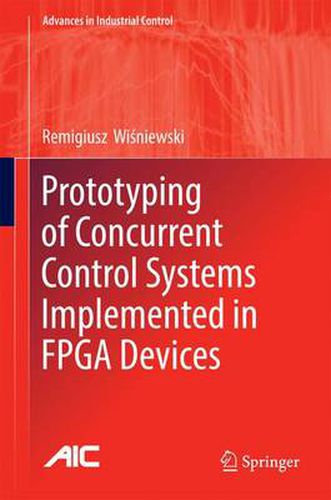Readings Newsletter
Become a Readings Member to make your shopping experience even easier.
Sign in or sign up for free!
You’re not far away from qualifying for FREE standard shipping within Australia
You’ve qualified for FREE standard shipping within Australia
The cart is loading…






This book focuses on prototyping aspects of concurrent control systems and their further implementation and partial reconfiguration in programmable devices. Further, it lays out a full prototyping flow for concurrent control systems. Based on a given primary specification, a system is described with an interpreted Petri net, which naturally reflects the concurrent and sequential relationships of the design.
The book shows that, apart from the traditional option of static configuration of the entire system, the latest programmable devices (especially FPGAs) offer far more sophistication. Partial reconfiguration allows selected parts of the system to be replaced without having to reprogram the entire structure of the device. Approaches to dynamic and static partial reconfiguration of concurrent control systems are presented and described in detail.<
The theoretical work is illustrated by examples drawn from various applications, with a milling machine and a traffic-light controller highlighted as representative interpreted Petri nets.
Given the ubiquity of concurrent control systems in a huge variety of technological areas including transportation, medicine, artificial intelligence, manufacturing, security and safety and planetary exploration, the innovative software and hardware design methods described here will be of considerable interest to control engineers and systems and circuits researchers in many areas of industry and academia.
$9.00 standard shipping within Australia
FREE standard shipping within Australia for orders over $100.00
Express & International shipping calculated at checkout
This book focuses on prototyping aspects of concurrent control systems and their further implementation and partial reconfiguration in programmable devices. Further, it lays out a full prototyping flow for concurrent control systems. Based on a given primary specification, a system is described with an interpreted Petri net, which naturally reflects the concurrent and sequential relationships of the design.
The book shows that, apart from the traditional option of static configuration of the entire system, the latest programmable devices (especially FPGAs) offer far more sophistication. Partial reconfiguration allows selected parts of the system to be replaced without having to reprogram the entire structure of the device. Approaches to dynamic and static partial reconfiguration of concurrent control systems are presented and described in detail.<
The theoretical work is illustrated by examples drawn from various applications, with a milling machine and a traffic-light controller highlighted as representative interpreted Petri nets.
Given the ubiquity of concurrent control systems in a huge variety of technological areas including transportation, medicine, artificial intelligence, manufacturing, security and safety and planetary exploration, the innovative software and hardware design methods described here will be of considerable interest to control engineers and systems and circuits researchers in many areas of industry and academia.